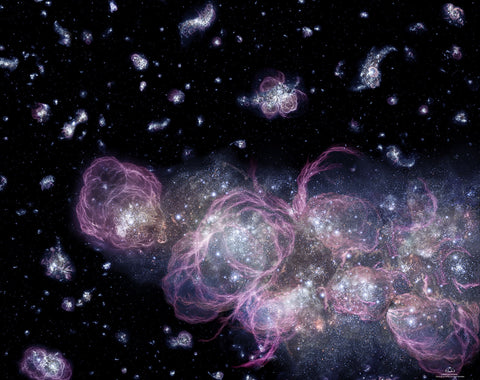
2023: A Year of Discoveries with the James Webb Space Telescope
The James Webb Space Telescope (JWST), a marvel of modern astronomy, has revolutionized our understanding of the cosmos. Launched in late 2021, JWST represents a significant leap forward in our ability to observe distant galaxies, stars, and planets. The year 2023 stands out as a pivotal moment in the telescope's journey, marked by groundbreaking discoveries that have deepened our insight into the universe.
JWST's Major Discoveries in 2023
In 2023, JWST made several extraordinary observations that have reshaped our cosmic perspective:
K2-18 b and its atmosphere:

One of the most remarkable achievements was the detection of methane and carbon dioxide in the atmosphere of K2-18 b, an exoplanet 8.6 times the mass of Earth. This discovery is a testament to JWST's ability to study the composition of distant worlds, offering clues about their potential habitability
Star Birthing Region NGC 346:

The telescope captured a stunning infrared image of NGC 346, a star-forming region. This image, with its intricate details of dust and gas, highlights the telescope's unparalleled capability to reveal the hidden aspects of galaxy formation and evolution.
Life Probability on Jupiters Moon Europa:

JWST identified carbon dioxide on the surface of Jupiter's moon Europa. This finding is crucial for understanding the moon's geology and potential for supporting life.
The Herbig-Haro 211 Phenomena:

The telescope observed the supersonic outflow from a young star (Herbig-Haro 211), shedding light on the dynamic processes involved in star formation.
Technological Advances and Challenges
2023 was also a year of technological triumphs and challenges for JWST. The telescope's advanced instruments, like the Mid-Infrared Instrument (MIRI), played a crucial role in these discoveries. However, operating in the harsh environment of space, JWST faced challenges such as maintaining optimal temperature and alignment of its mirrors. These hurdles were overcome through innovative engineering and remote adjustments, showcasing the resilience and adaptability of the mission.
Impact on Science and Future Research
The discoveries made by JWST in 2023 have had a profound impact on astronomical research. They have not only expanded our knowledge of the universe but also opened new avenues for future exploration. These findings are expected to influence the direction of upcoming space missions and inspire further studies into the mysteries of the cosmos.
Conclusion
The year 2023 marked a significant chapter in the journey of the James Webb Space Telescope. Its contributions to astronomy have been monumental, offering a new lens through which we view the universe. As we look forward, the JWST continues to promise a future rich with discovery and wonder.
Learn More and Stay Updated
For more information and the latest updates on the James Webb Space Telescope and other astronomical topics, visit jwst.shop. Stay tuned for more exciting discoveries and in-depth articles!


